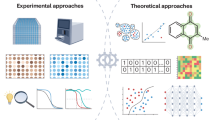Abstract
In the presence of water vapor at 37°C, lyophilized recombinant human albumin (rHA) undergoes intermolecular thiol-disulflde interchange, eventually forming high-molecular-weight, water-insoluble aggregates. The relationship between the extent of aggregation and the water content of the lyophilized protein was bell-shaped, with maximum aggregation (over 80% after one day) at approximately 50 g water per 100 g dry protein, corresponding to incubation at 96% relative humidity. Nineteen different excipients were co-lyophilized with rHA to test their ability to inhibit aggregation under these conditions. These compounds included low- and high-molecular-weight sugars, as well as various organic acids (amino, hydroxy, and aliphatic), and the simple inorganic salt sodium chloride. Seven of them afforded complete stabilization of rHA against moisture-induced aggregation. The stabilizing potency of the excipients correlated with their water-sorbing capability, presumably due to increasing the moisture level in the vicinity of rHA.
This is a preview of subscription content, access via your institution
Access options
Subscribe to this journal
Receive 12 print issues and online access
$209.00 per year
only $17.42 per issue
Buy this article
- Purchase on Springer Link
- Instant access to full article PDF
Prices may be subject to local taxes which are calculated during checkout
Similar content being viewed by others
References
Langer, R. 1993. Polymer-controlled drug delivery systems. Acc. Chem. Res. 26: 537–542.
Hageman, M.J. 1988. The role of mosisture in protein stability. Drug Dev. Ind. Pharm. 14: 2047–2070.
Hageman, M.J., Bauer, J.M., Possert, P.L., and Darrington, R.T. 1992. Preformulation studies oriented toward sustained delivery of recombinant somatotropins. J. Agric. Food Chem. 40: 348–355.
Costantino, H.R., Longer, R., and Klibanov, A.M. 1994. Moisture-induced aggregation of lyophilized insulin. Pharm, Res. 11: 21–29.
Schwendeman, S.P., Gupta, R.K., Costantino, H.R., Siber, G.R., and Langer, R. 1993. Stability of tetanus vaccine for encapsulation in bioerodible polymer microspheres. Pharm. Res. 10: S–220.
Cleland, J.L., Powell, M.F., and Shire, S.J. 1993. The development of stable protein formulations. A close look at protein aggregation, deamidation, and oxidation. Crit. Rev. Therapeutic Drug Carrier Systems 10: 307–377.
Peters, T. 1985. Serum albumin. Adv. Protein Chem. 37: 161–245.
He, X.M., and Carter, D.C. 1992. Atomic structure and chemistry of human serum albumin. Nature 358: 209–215.
Liu, W.R., Langer, R., and Klibanov, A.M. 1991. Moisture-induced aggregation of lyophilized proteins in the solid state. Biotechnol. Bioeng. 37: 177–184.
Costantino, H.R., Langer, R., and Klibanov, A.M., 1994. Solid-phase aggregation of proteins under pharmaceutically relevant conditions. J. Pharm. Sci. 83: 1662–1669.
Carpenter, J.F., and Crowe, J.H. 1989. An infrared spectroscopic study of the interaction of carbohydrates with dried proteins. Biochemistry 28: 3916–3922.
Arakawa, T., Kita, Y., and Carpenter, J.F. 1991. Protein-solvent interactions in pharmaceutical formulations. Pharm. Res. 8: 285–291.
Lang, K., and Steinberg, M.P. 1980. Calculation of moisture content of a formulated food system to any given water activity. J. Food Sci. 45: 1228–1230.
Sloan, A.E., and Labuza, T.P. 1975. Humectant water sorption isotherms. Food Prod. Devel. 9(10): 68.
Creighton, T.E. 1983. Proteins, p. 136–157. W. H. Freeman and Co., New York.
Dill, K.A. 1990. Dominant forces in protein folding. Biochemistry. 29: 7133–7155.
Kuntz, I.D., and Kauzmann, W. 1974. Hydration of proteins and polypeptides. Adv. Protein Chem. 28: 239–345.
Prestrelski, S.J., Tedeschi, N., Arakawa, T., and Carpenter, J.F. 1993. Dehydration-induced conformational transitions in proteins and their inhibition by stabilizers. Biophys. J. 65: 661–671.
Desai, U.R., Osterhout, J.J., and Klibanov, A.M. 1994. Protein structure in the lyophilized state. A hydrogen isotope exchange/NMR study with bovine pancreatic trypsin inhibitor. J. Amer. Chem. Soc. 116: 9420–9422.
Fu, F.-N., DeOliveira, D.B., Trumble, W.R., Sarkar, H.K., and Singh, B.R. 1994. Secondary structure estimation of proteins using the amide III region of Fourier transform infrared spectroscopy: Application to analyze calcium-binding-induced structural changes in calsequestrin. Appl. Spectr. 48: 1432–1441.
Habeeb, A.F.S.A. 1966. Chemical evaluation of conformational differences in native and chemically modified proteins. Biochim. Biophys. Acta 115: 440–454.
Habeeb, A.F.S.A. 1978. Immunochemistry of bovine serum albumin. Adv. Exp. Med. Biol. 98: 101–117.
Aoki, K., Sato, K., Nagaoka, S., Kamada, M., and Hiramatsu, K. 1973. Heat denaturation of bovine serum albumin in alkaline pH region. Biochim. Biophys. Acta 328: 323–333.
Andersson, L.-O. 1969. Reduction and reoxidation of the disulfide bonds of bovine serum albumin. Arch. Biochem. Biophys. 133: 277–285.
Timasheff, S.N. 1992. Stabilization of protein structure by solvent additives, pp. 265–285. In: Stability of Protein Pharmaceuticals. Part B. In Vivo Pathways of Degradation and Strategies for Protein Stabilization. T. J. Ahern and M. C. Manning (Eds.). Plenum Press, New York.
Chen, R.F. 1967. Removal of fatty acids from serum albumin by charcoal treatment. J. Biol. Chem. 242: 173–181.
Author information
Authors and Affiliations
Rights and permissions
About this article
Cite this article
Costantino, H., Langer, R. & Klibanov, A. Aggregation of a Lyophilized Pharmaceutical Protein, Recombinant Human Albumin: Effect of Moisture and Stabilization by Excipients. Nat Biotechnol 13, 493–496 (1995). https://doi.org/10.1038/nbt0595-493
Received:
Accepted:
Issue Date:
DOI: https://doi.org/10.1038/nbt0595-493
This article is cited by
-
Accelerated Stability Studies for Moisture-Induced Aggregation of Tetanus Toxoid
Pharmaceutical Research (2011)
-
In vitro release modulation and conformational stabilization of a model protein using swellable polyamidoamine nanosponges of β-cyclodextrin
Journal of Inclusion Phenomena and Macrocyclic Chemistry (2010)



